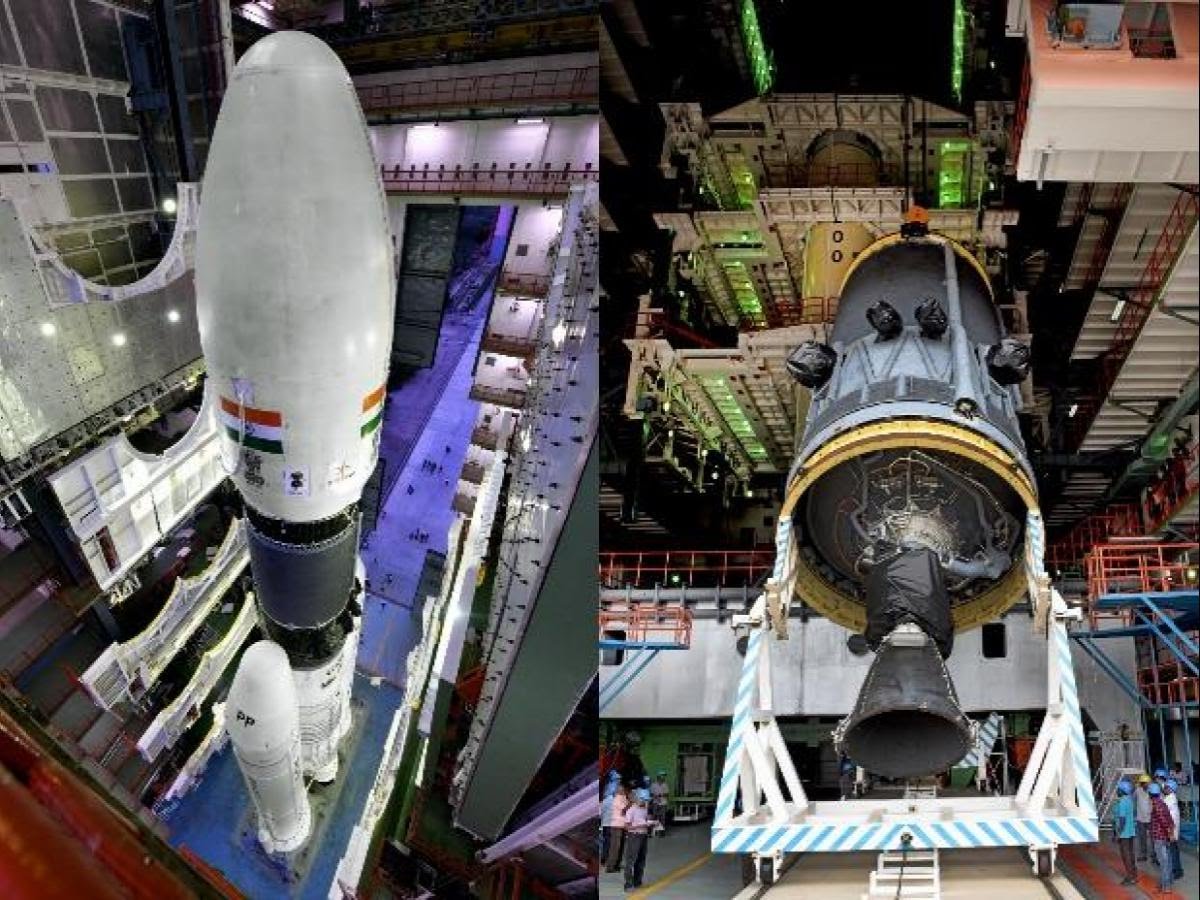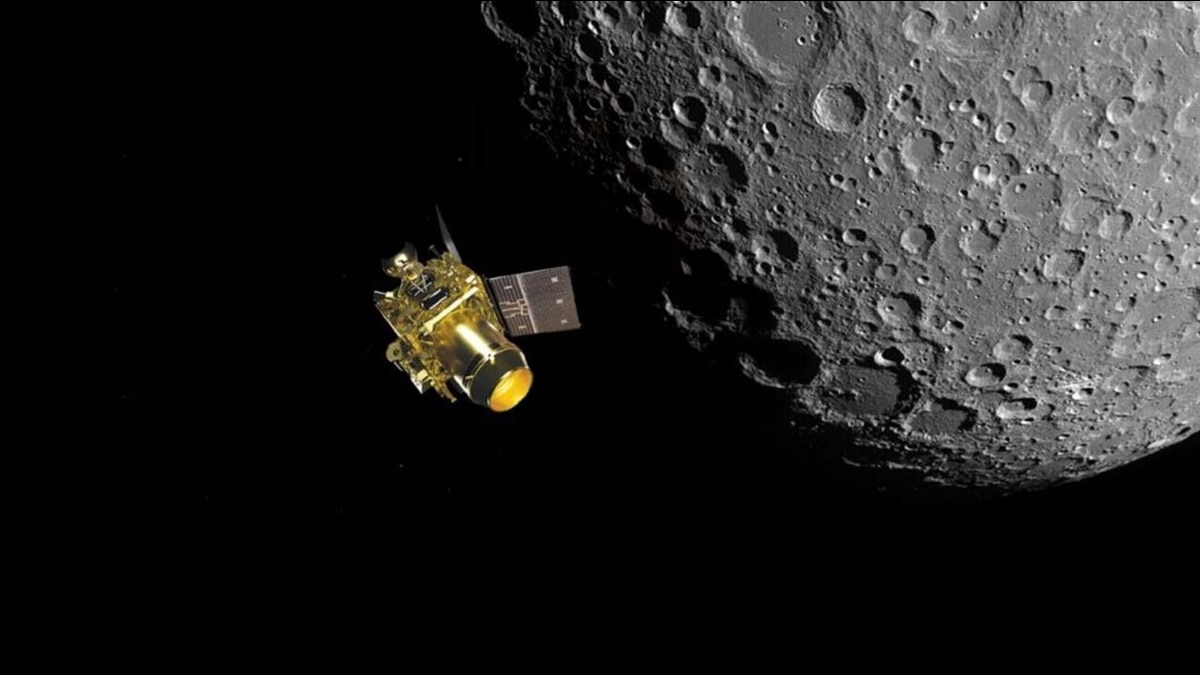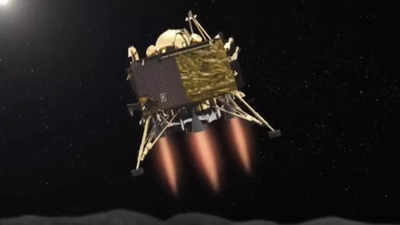- Joined
- Apr 29, 2015
- Messages
- 18,416
- Likes
- 56,946
Sourced from NSF. Either Wikipedia or some report.


| Coordinates on the Moon | 12° 54′ 0″ S, 103° 6′ 0″ W (-12.9°, -103.1°) |
|---|
Guys , hold your horses, these are Pre- Chandrayaan-2 Plans , After it's failure, everything changed, we have to wait until they release the new plans, but its good to know that they planned wide variety of Interplanetary missions to Moon, Mars, Comets, Mercury, Jupiter, Saturn and various sample return missions to asteroids & comets.View attachment 117309
Here’s the Lowell lunar crater:View attachment 117316
Coordinates on the Moon 12° 54′ 0″ S, 103° 6′ 0″ W (-12.9°, -103.1°)
View attachment 117317
66km wide crater at Mare Orientale basin.
And…
Schrdinger basin
View attachment 117312View attachment 117315
It’s also nearby the Lowel crater
View attachment 117318View attachment 117319

Chandrayaan-3
mission to the moon is likely to be launched during the third quarter of 2022 assuming normal workflow henceforth, Union Minister of State in the Department of Space Dr Jitendra Singh informed on Wednesday.
In a written reply to a question in the Lok Sabha today, he said, the realisation of Chandrayaan-3 is in progress.
"The realization of Chandrayaan-3 involves various processes including finalization of configuration, subsystems realization, integration, spacecraft level detailed testing, and a number of special tests to evaluate the system performance on earth," the minister said.
He stated that the realisation progress was hampered due to the COVID-19 pandemic.
"However, all works that were possible in work from home mode were taken up even during lockdown periods. Chandrayaan-3 realization resumed after commencement of unlock period and is in matured stage of realization," read the reply.
For delayed missions, it will be our endeavour to meet revised deadlines. I will try my best to achieve the goals set by Dr Sivan.
In Isro, satellites and rockets are not made under one umbrella but in different centres spread across the country. For example, if a cryogenic engine has to be developed, it requires 16 movements among our centres.

Former ISRO chairman AS Kiran Kumar said that all instruments and payloads to be mounted on the Vikram lander are undergoing final experiments and testing. The lander will be an important part of the Chandrayaan-3 mission, whose launch is planned by the Indian Space Research Organisation (ISRO) later this year.
He was speaking on ‘ISRO Exploration Missions’ during the ‘Space Radiation Workshop’ organised virtually by Aryabhatta Research Institute of Observational Sciences (ARIES), Indian Institute of Science Education and Research (IISER), Pune and NASA. The workshop, organised as part of India’s 75 years of Independence, will conclude on Friday.
The orbiter part of the Chandrayaan-2 mission was successfully inserted into the orbit in August 2019 but the soft-landing of the Vikram lander carrying the Pragyan rover failed. The third moon mission will make another attempt to land Vikram on the lunar surface.
“The unsuccessful attempt of the Vikram lander is being taken care of and in the Chandrayaan-3 mission, the lander and rover will be carried on a propulsion module. All payloads for tracking the lunar activity, the alpha-particle X-ray spectrometer and the ChaSTE — the lone instrument to touch the lunar surface to perform thermal measurements of lunar high-latitude regions — and others are being integrated with the rover. These are getting ready for tests and launch later this year,” said Kiran Kumar, who is currently the chairman of the Physical Research Laboratory (PRL) Council and a member of the Apex Science Board of the ISRO.
On the successful completion of over two years by the Chandrayaan-2 orbiter, the former ISRO chief said that there was enough fuel required to continue operations and that the satellite is functioning well. “The mission is expected to carry on for many more years,” he said.
In the future, there will be attempts to reposition the satellite to be able to go to a lower orbit and collect more data post Chandrayaan-3, which will provide a backup relay system for Chandrayaan-2, he informed.
Hailing the science that has emerged from Mars Orbiter Mission (MOM) and AstroSat missions of the ISRO, Kiran Kumar said that researchers from over 50 countries have used data generated by each of these missions.
Similar to Chandrayaan-3, the final testing of the instruments onboard the solar mission, named Aditya L-1, is under progress. This will be India’s maiden mission to the Sun and is scheduled for a lunch this year.
The third mission XPoSat, also gearing up for a 2022 launch, will be a dedicated satellite for measuring polarization in X-rays. The two payloads part of this mission are Polarimeter Instrument (POLIX) and X-Ray Spectrometer (XSPECT).
Giving glimpses into the space agency’s future missions, Kiran Kumar talked about Disturbed and quiet time Ionosphere-thermosphere System at High Altitude (DISHA) and the mission to planet Venus. DISHA — a twin aeronomy mission with six payloads — will study the relevance of space weather and its effects on the terrestrial upper atmosphere.
“Both DISHA and the mission to Venus are presently in their final stages of discussions and approval,” he said.
The ISRO is also in talks for collaboration with its Japanese counterpart, the Japan Aerospace Exploration Agency (JAXA), and the mission could also see contributions from NASA. This mission shall have a 350kg rover with instruments to perform in-situ (at source) samples and perform analysis near the moon’s south pole.
“In another two years from now, the ISRO plans to collaborate with JAXA for a six-month Lunar Polar Exploration mission with an expected launch in 2024 or 2025.”
On career opportunities for working with the ISRO, Kiran Kumar said that the young students can work for the ISRO through the scientific institutions collaborating with the space agency.
“The field of Space Sciences is growing significantly and becoming important in the country,” he said.

The Chandra’s Atmospheric Composition Explorer-2 (CHACE-2), a quadrupole mass spectrometer onboard Chandrayaan-2 mission has made the first-of-its-kind observations of the global distribution of Argon-40 in the tenuous lunar exosphere. These observations provide insight on the dynamics of the lunar exospheric species, as well as on the radiogenic activities in the first few tens of meters below the lunar surface.
‘Exosphere’ is the outermost region of the upper atmosphere of a celestial body where the constituent atoms and molecules rarely collide with each other and can escape into space. Earth’s Moon features a surface-boundary-exosphere. For Moon, different constituents in the exosphere are fed from the surface by a variety of processes, such as thermal desorption, solar wind sputtering, photo-stimulated desorption, and micrometeorite impact vaporization. The exospheric atoms may be lost to space by the thermal escape (also known as the Jean’s escape). Also, the atoms get ionized by photo-ionization and charge exchange with the solar wind ions. Subsequently, they can be swept away by the convective electric field of the solar wind. Some of these atoms/ions can also be deposited back on the lunar surface. Thus, the lunar exosphere exists as a result of a dynamic equilibrium between several source and sink processes.
Noble gases serve as important tracers to understand the processes of surface-exosphere interaction, and Argon-40 (Ar-40) is such an important tracer atom to study the dynamics of the lunar exospheric species. Ar-40 originates from the radioactive disintegration of Potassium-40 (K-40) present below the lunar surface. Once formed, it diffuses through the inter-granular space and makes way up to the lunar exosphere through seepages and faults.
The CHACE-2 observations provide the diurnal and spatial variation of Ar-40 covering the equatorial and mid latitude regions of the Moon. The uniqueness of this result from Chandrayaan-2 mission lies in the fact that although Apollo-17 and LADEE missions have detected the presence of Ar-40 in the lunar exosphere, the measurements were confined to the near-equatorial region of the Moon. As there is a steep latitudinal temperature gradient of the lunar surface, it was, so far, a gap area to study the global dynamics of the lunar exospheric species, which is a temperature-driven process. In this context, the observations by CHACE-2 onboard Chandrayaan-2 orbiter on Ar-40 up to the mid-latitude regions (−60º to +60º) play a significant role to bridge the gap in the knowledge.
CHACE-2 observations reveal an increase in the number density of Ar-40 near the sunrise terminator, a decrease through the dayside, a secondary peak near sunset terminator and a night-side minima. This is the typical behaviour of a condensable gas.

For the mid latitude regions, CHACE-2 observations showed for the first time that the variation in the number density of Ar-40 with respect to solar longitudes are similar to that of low latitude regions, despite the differences in temperature and topography.
Further, the CHACE-2 observations reveal that the distribution in Ar-40 has significant spatial
variation of Ar-40 covering the equatorial and mid latitude regions of the Moon. The uniqueness of this result from Chandrayaan-2 mission lies in the fact that although Apollo-17 and LADEE missions have detected the presence of Ar-40 in the lunar exosphere, the measurements were confined to the near-equatorial region of the Moon. As there is a steep latitudinal temperature gradient of the lunar surface, it was, so far, a gap area to study the global dynamics of the lunar exospheric species, which is a temperature-driven process. In this context, the observations by CHACE-2 onboard Chandrayaan-2 orbiter on Ar-40 up to the mid-latitude regions (−60º to +60º) play a significant role to bridge the gap in the knowledge.
CHACE-2 observations reveal an increase in the number density of Ar-40 near the sunrise terminator, a decrease through the dayside, a secondary peak near sunset terminator and a night-side minima. This is the typical behaviour of a condensable gas.

For the mid latitude regions, CHACE-2 observations showed for the first time that the variation in the number density of Ar-40 with respect to solar longitudes are similar to that of low latitude regions, despite the differences in temperature and topography.
Further, the CHACE-2 observations reveal that the distribution in Ar-40 has significant spatial heterogeneity. There are localized enhancements (termed as Argon bulge) over several regions including the KREEP (potassium (K), rare-earth elements, and phosphorus (P)) and South Pole Aitken terrain. The observations of Argon bulge by CHACE-2 are indicative of unknown or additional loss processes, Moon quakes or regions with lower activation energies, which call for a better understanding of the surface-exosphere interactions and source distributions of Ar-40.
CHACE-2 was a sequel to the CHACE experiment on the Moon Impact Probe (MIP) of Chandrayaan-1 mission and also draws heritage from the Mars Exospheric Neutral Composition Analyser (MENCA) experiment aboard the Indian Mars Orbiter Mission.
The results are published in the journal ‘Geophysical Research Letters’, doi: 10.1029/2021GL094970.



No idea sir ji probably next year or probably this year good news is they are not bypassing test like they did during chanderYan-2I really don't follow much updates with regards to our Space program and ISRO.
But I am aware of Chandrayaan 3 which will be a successor of Chandrayaan 2. So when is Chandrayaan 3 happening? Like when will we launch it into space?
Personally for me : It doesn't matter whether Chandrayaan-3 mission is launched in the 2nd quarter, 3rd or even 4th quarter of this year, all I want is that Chandrayaan 3 be launched atleast before December 1st of this year (that is 2022).
Will Chandrayaan-3 Lander land here? If you have Co-ordinates of Landing location of C-3 than please post it here.View attachment 117629
Here’s the Lowell lunar crater:View attachment 117632
Coordinates on the Moon 12° 54′ 0″ S, 103° 6′ 0″ W (-12.9°, -103.1°)
View attachment 117633
66km wide crater at Mare Orientale basin.
And…
Schrdinger basin
View attachment 117630View attachment 117631
It’s also nearby the Lowel crater
View attachment 117634View attachment 117635

BENGALURU: The Indian Space Research Organisation (Isro), which has lined up a series of tests this year before it launches Chandrayaan-3 — expected only in 2023 — completed a key test on the lander on Sunday.
According to a senior Isro official overseeing the mission, Chandrayaan-3 launch is expected only in 2023 even as “the project is making significant progress with tests yielding good results.
“Things are going well and all tests have yielded good results. On Sunday night we performed a hanging condition simulation to test low-gravity condition, engine firing and camera. All parametres were as planned. However, there are still a lot of tests to be carried out and the mission is only expected next year,” the official said, refraining from spelling out the specifics owing to the ongoing Parliament session.
As first reported by TOI, Chandrayaan-3, unlike Chandrayaan-2 will not be carrying an orbiter as part of the mission — it’ll only have a propulsion module (PM) carrying the lander and rover until separation. While the PM will not carry any primary payload, another official said: “It will have equipment that’ll be used to communicate with the lander and the ground station. The PM will be used to relay information.”

SSLV First MissionIsro, which failed to soft-land Vikram (Chandrayaan-2 lander) which was carrying Pragyan (rover) in September 2019, is carrying out exhaustive tests for Chandrayaan-3. “Failure is not an option this time. The chairman has made it very clear that we need to test and retest until we are sure of everything on ground before moving ahead for launch preparations,” a scientist said.
The space agency is also awaiting clearance for the launch of the first Small Satellite Launch Vehicle (SSLV), a technology demonstrator mission of which is expected in the coming weeks. While Isro is confident of an August launch, the final date, an official said, “was yet to be decided”. “We are looking at August, but it may not happen in the first few days.”
Isro has done extensive testing of the SSLV, with the key ground testing of the newly developed solid booster stage (SS1) also having been completed. This test was considered the last major test before the tech-demonstrator mission.
The SSLV will have more than one technology demonstrator mission before it can be used as a mainstream launcher. Once that is achieved, Space PSU NewSpace India Limited (NSIL) is also looking at utilising the rocket for commercial missions.
Comment section maha hutiya with Chinese bots and Indian commies licking each other's .....Another Chandrayaan-3 test done on Sunday; SSLV launch planned for August
Artistic impression of the lander
Artistic impression of SSLV
rocket/launch vehicle
SSLV First Mission
